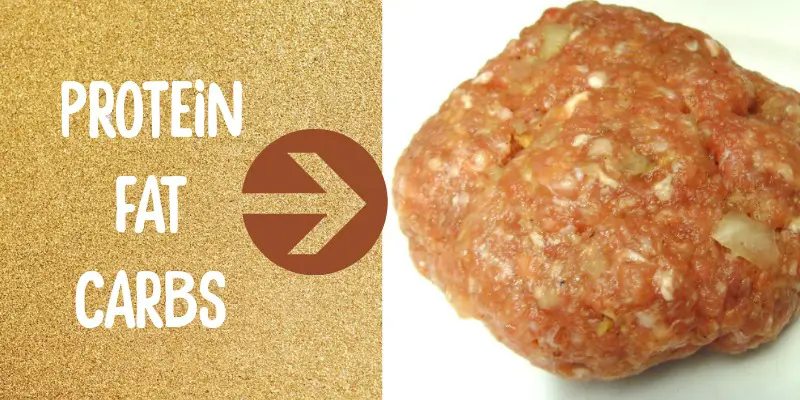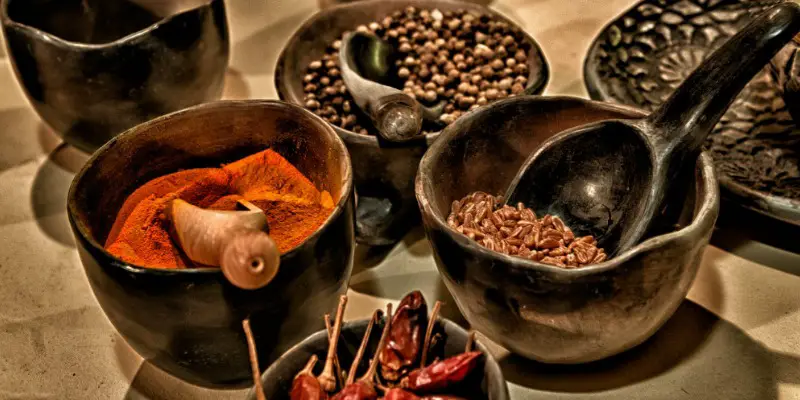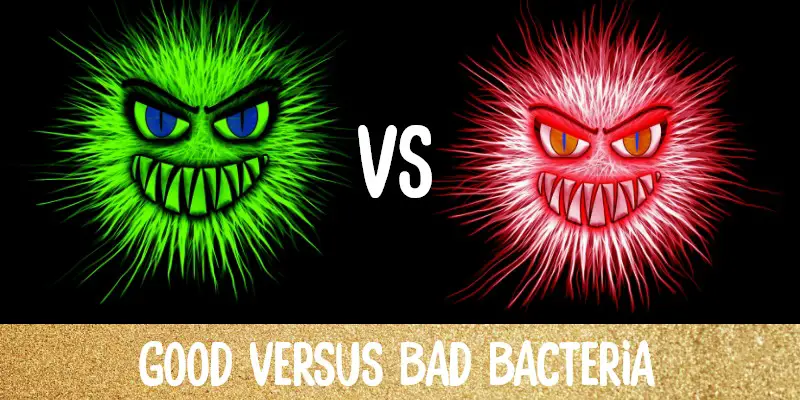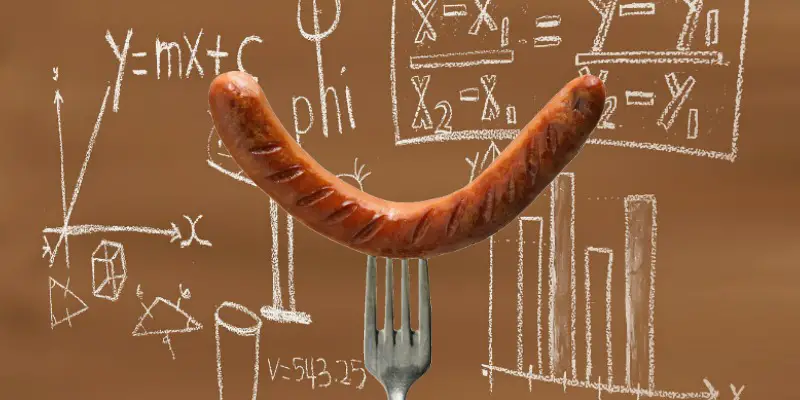Most of us see sausage as a delicious meal that’s convenient to make. Nothing more, nothing less. Although sausages may seem like just a meat, there is actually a great deal of science behind this simple, yet tasty, meal. In this article, we’ll look at the science behind the making of sausages.
Macromolecules within the sausage
Sausages are made up of three of the major macromolecules that are found in just about every life form on earth. The molecules that make up the sausage also make up human beings!

Components of sausage meat
The molecules found in sausage meat are:
- Proteins
- Fats
- Carbohydrates
These macromolecules commonly derive from the diet of the cow or pig. The nutrients will vary depending on where you get your sausage from.
1. Protein
The most prevalent macromolecule present is protein because of the many different enzymes and muscles found in animals. These proteins are formed after many steps of folding and processing by various amino acid chains, the basic monomers of protein.

Protein is a major component in sausage meat.
Protein is an extremely important part of our diet because it supplies our body with new amino acids. This allows our body to fix itself and create new proteins and enzymes; these are responsible for just about everything in your body from hair to movement.
2. Fat
The second most prevalent macromolecule is fat, but more specifically, saturated fat. This fat is found in animals and differs from that found in nuts or oil. The fatty acid chain is straight rather than crooked at the end as it is in unsaturated fat. Saturated fat is worse for your body because in the absence of a crooked end, the fat molecules can accumulate closely together and clog your arteries. Fat however, is an essential source of energy. Eating fat in healthy amounts can supply you with the energy necessary to power you through the day.
3. Carbohydrates
Sausages themselves are very low in carbohydrates and this is mainly because carbohydrates consist of sugars and grains. The sausage could however, be seasoned which would increase carbohydrate content.

Spices increase the carb count in sausage.
Spices such as Paprika, Oregano and garlic powder are all fairly high in carbs and can cause sausage to have high carbohydrate counts.
The process of macromolecule separation
One of the many scientific processes that happens during the creation of the sausage is the separation of different macromolecules because of physical or chemical changes. For example, when mixing your meat with other ingredients that are high in sodium, thin white strands of myosin proteins (which come from the muscle of the animal) will start to form on the surface. This protein has undergone physical changes because of the addition of salt, which partially dissolves the protein around it and the constant mixing that is done at this step.
The mixing of the meat causes the molecules to loosen their bonds to each other and can cause them to separate from the mixture. Mixing can also tear ligaments and other proteins near the myosin proteins and cause them to come loose from the meat. The same is true for the salt, which sucks the water out of the various cells inside the meat due to osmotic pressure, causing some of the proteins to loosen.
Fermentation during sausage making
The process of sausage fermentation also has a great deal of science behind it. Fermentation is a process in which bacteria is added to sausage while it is drying. This helps preserve the meat and also helps to add flavor.
Bacterial colonies such as LS-25 are added into the meat and are usually left to grow in a heated environment for a day, as it is their ideal growing conditions. During this time, the small initial colony of bacteria multiply very fast because bacteria can replicate their genome once every few hours. In order to do this however, they must maintain a constant stream of nutrient inflow. The bacteria achieve this by eating some of the nutrients in the meat.

Good bacteria stops the proliferation of bad bacteria.
With every consumption, there must be a byproduct and in bacteria, that byproduct is lactic acid. They make this through a process called lactic acid fermentation. This is where the nutrients are converted into ATP (Adenosine triphosphate- aka the energy of all life) and lactic acid. This lactic acid is very important to the sausage during this process of fermentation because it lowers the pH of the sausage meat to around 4.6 which is too acidic for harmful bacteria to grow on the sausage. It also adds a tangy flavor like the one you can taste in salami.
Sausage Emulsion
Another scientific process that plays a key role in making sausage is meat emulsion. This process can be found in bologna, frankfurters, meat loaf and liver sausages. During this process, meats are finely chopped and turned into a gel-like substance with the addition of fat in the form of oils. This entire substance is added into an emulsion machine called a bowl cutter to produce a homogenous mixture of meat. This is able to happen because of the intense mechanical mixing and the addition of the oil. This mixing causes things to stick together because it breaks the meat down into its basic protein chains, which can then make new bonds with other chains that are less strong, accounting for the liquid-like texture of the meat.
Final Words
As you can see, science plays a major role in producing the sausages we know and love. Science has helped artisans sausage makers create delicious meats through chemical and physical processes for hundreds of years.
It’s likely that new scientific processes will be developed to further the craft of making sausages. New technologies such as the bowl cutter and meat emulsion are relatively new processes that are already being used in the mass sausage-making market.
Not everyone loves science. But you have to love that such a simple food as the sausage has so much science behind it. Do you like to make your own sausages at home? If yes, it’s good to have an understanding of how, and why, your sausages taste the way they do.


Leave A Comment